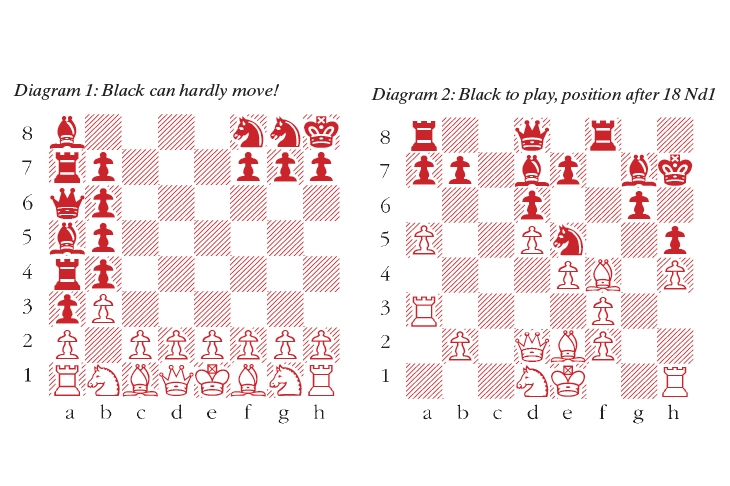‘Exchange chess’ (also known as bughouse) is the chess equivalent of a three-legged race. It is played in teams of two, on adjacent boards with opposite colours, and it works best when nobody takes it seriously. The only essential rule is that when you capture an opponent’s piece, you hand it to your partner, who may later plonk it down on an empty square in lieu of moving a piece. A checkmate on either board wins, no matter how dire the adjacent situation.
A long time ago, when we couldn’t convene a foursome, a friend taught me to play ‘one-board exchange chess’. This variant, which I now see is listed as ‘Replacement chess’ in the Classified Encyclopedia of Chess Variants, requires just two players. The only rule is that captured pieces must be immediately replaced on a different square; pawns can’t be replaced on the first and last ranks, and the way we played it, bishops didn’t have to be kept apart.
Exchange chess is fun for being brisk and chaotic. Replacement chess was, to my surprise, slow-burning and deliberate. What fascinated me is that since you can never reduce your opponent’s firepower, the only decent strategy is to contain it. My favourite ruse was to try to place my opponent’s pieces as in the first diagram, creating a traffic jam of queenside pieces which can be entirely immobilised by two White pawns on a2 and b3, so the nearly deserted Black king can be hunted down on the other side of the board.
The following game, won by Magnus Carlsen at the recent World Cup in Sochi, shows the practical importance of piece mobility in real chess. Indeed, computer programs often use the number of legal moves available to each sides as a component in their evaluation. In the second diagram, the splendid sacrifice 18…Rxf4! secured outposts for the minor pieces on f4 and e5, but more to the point, White’s queen and rook were soon doomed to wait out their days in the corner.
Vladimir Fedoseev-Magnus Carlsen
Fide World Cup, Sochi 2021
18…Rxf4 19 Qxf4 Bh6 20 Qg3 Qf8 21 Ne3 Bf4 22 Qg2 Rc8 23 Rc3 Rxc3 24 bxc3 Qc8 25 c4 b5 A clever way to force the en passant capture, since 26 cxb5 Qc1+ 27 Nd1 Qd2+ 28 Kf1 Bxb5 wins. 26 axb6 axb6 27 Qg1 27 O-O was still possible! Bh3 28 Qh1 Bxf1 29 Kxf1 and White is far less congested. Qa8 28 Kf1 Qa2 Cleverly hitting the Be2, to prevent Kf1-g2. 29 Ng2 Qa1+ 30 Ne1 Qb2 31 Ng2 Qc1+ 32 Ne1 Qd2 33 Qg2 Kg7 34 Rg1 Kf8 35 Qh1 e6 36 Rg3 exd5 37 exd5 Bf5 38 Rg1 Kf7 The contrast in mobility could hardly be more pronounced. 39 Rg3 Nd7 Preparing Nd7-c5-b3-d4 40 Rg5 Bxg5 41 hxg5 Ne5 Now 42 Qh4 Qc1 43 Qd4 (else Nd3) Bh3+ wins, so White resigns






Comments